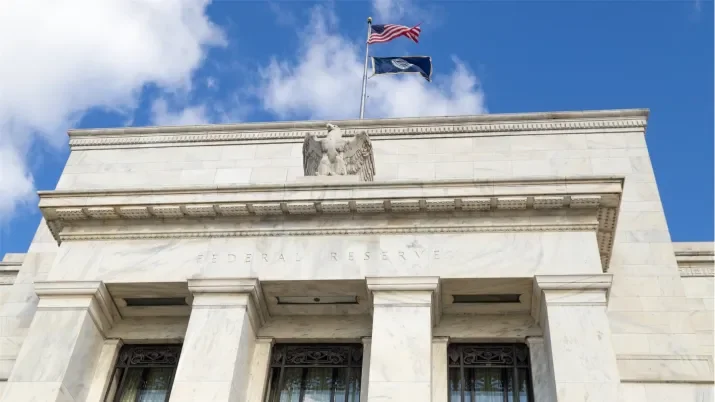Will the uptick in US consumer credit influence Fed Policy?
The worsening US consumer credit data has largely fallen under radar. A few weeks ago, November 2023 data came in at $23.8bn representing a substantial increase from October’s $5.77bn and September’s $10.9bn. Most of the increase was attributed to the revolving component, which is dominated by credit cards. Generally, the revolving credit numbers are quite volatile, but it appears as if an upward trend could be developing.
One plausible explanation could be that consumers appear now to have run down most, or all of the excess savings accumulated during the pandemic, and as a result are now increasing their borrowing. Looking at this a little closer, the savings rate in the US and the total amount of savings experienced significant changes pre- and post-Covid. Before the pandemic, in 2019, the personal savings rate in the US averaged around 7.5% of disposable income, according to the Federal Bureau of Economic analysis (BEA) data. Over the past 40 years, that average was closer to 6.5%. This trend started reversing post-pandemic, with the savings rate declining to levels lower than those before the pandemic and currently registering 4.1%.
However, during the pandemic, this rate soared due to increased government support, like stimulus checks and reduced consumer spending, reaching an all-time high of 33.7% in April 2020. According to BEA, by mid–2020, US households had accumulated an estimated $2.3trn in excess savings. From 2020 through 2021, excess savings were positive because the observed savings rate exceeded the long-term average. Starting in late 2021, excess savings have been declining as the observed savings rate fell below the long-term average.
There has been a wide variance of estimates as to how much excess savings are in the system currently but given the declining trajectory of the savings rate and latest consumer credit numbers, we may well have meaningfully eroded the healthy savings buffer that has been the main driver contributing to the health of the US consumer since the end of the pandemic.
This lower savings rate has an impact on the state of household finances and credit card balances. According to a report from the Federal Reserve Bank of Philadelphia, data through Q3 2023 shows that credit card delinquencies have been steadily increasing after reaching historical lows in the second quarter of 2021 and are now exceeding pre-pandemic levels, with the share of borrowers making only the minimum payment climbing above 10% for the first time since 2019.
For example, the 60+ days past due balance-based rate was 2.21% in the third quarter of 2023, up 28 bps from 1.93% in the third quarter of 2019. Almost 3.2% of card balances were also at least 30 days past due. That is the highest figure in more than a decade and up by over 40 bps from the previous quarter. Areas with lower median income consistently show higher credit card delinquency rates. This trend suggests that individuals in these areas may face greater financial challenges, leading to difficulties in meeting credit card payment obligations. Delinquencies have, however, increased across all income quartiles indicating a broad-based rise affecting all income groups, not just the lower-income brackets.
The most recent data from the Fed reveals that credit card debt soared to $1.08trn in Q3 2023, a meaningful increase compared to the pre-pandemic level of $927bn. Importantly, however, it must also be noted that the current trend in credit card delinquencies indicates that they have been “normalising” or reverting to levels observed before the pandemic.
The numbers do, however, point to pressure on US household finances. The Philly Fed report also stated that banks are cutting back on borrowing limits. Credit card rates have surged and are currently sitting at levels above 21%, adding to the burden on households.
What does it all mean? As credit card debt increases, consumers may allocate more of their income to debt repayment, potentially reducing their savings rate. An increase in delinquency rates indicates more consumers are struggling to meet credit obligations, which could lead to tighter credit conditions and reduced consumer spending. Higher debt often leads to reduced discretionary spending and consumers may prioritise essentials purchases and limit luxury or non–essential spending. This could include preference to pay mortgage debt over credit card obligations. Paying off housing loans is still in good stead as mortgage delinquencies improved to new historical lows in recent quarters. Generally, as debt levels rise, the consumer savings rate may continue to decrease, as more income is directed towards servicing debt.
We shall be monitoring closely the upcoming December US consumer credit data for signs of increased borrowings as although credit card balances and delinquencies are normalising to pre-pandemic levels, the trend appears to be increasing. The Fed closely monitors consumer borrowing and spending trends as they can influence inflation and economic growth. As such, this data will have an influence on future monetary policy adjustments the Fed will need to manage inflation, economic growth, and employment targets. Quite relevant given the current ongoing debates surrounding Fed policy.




